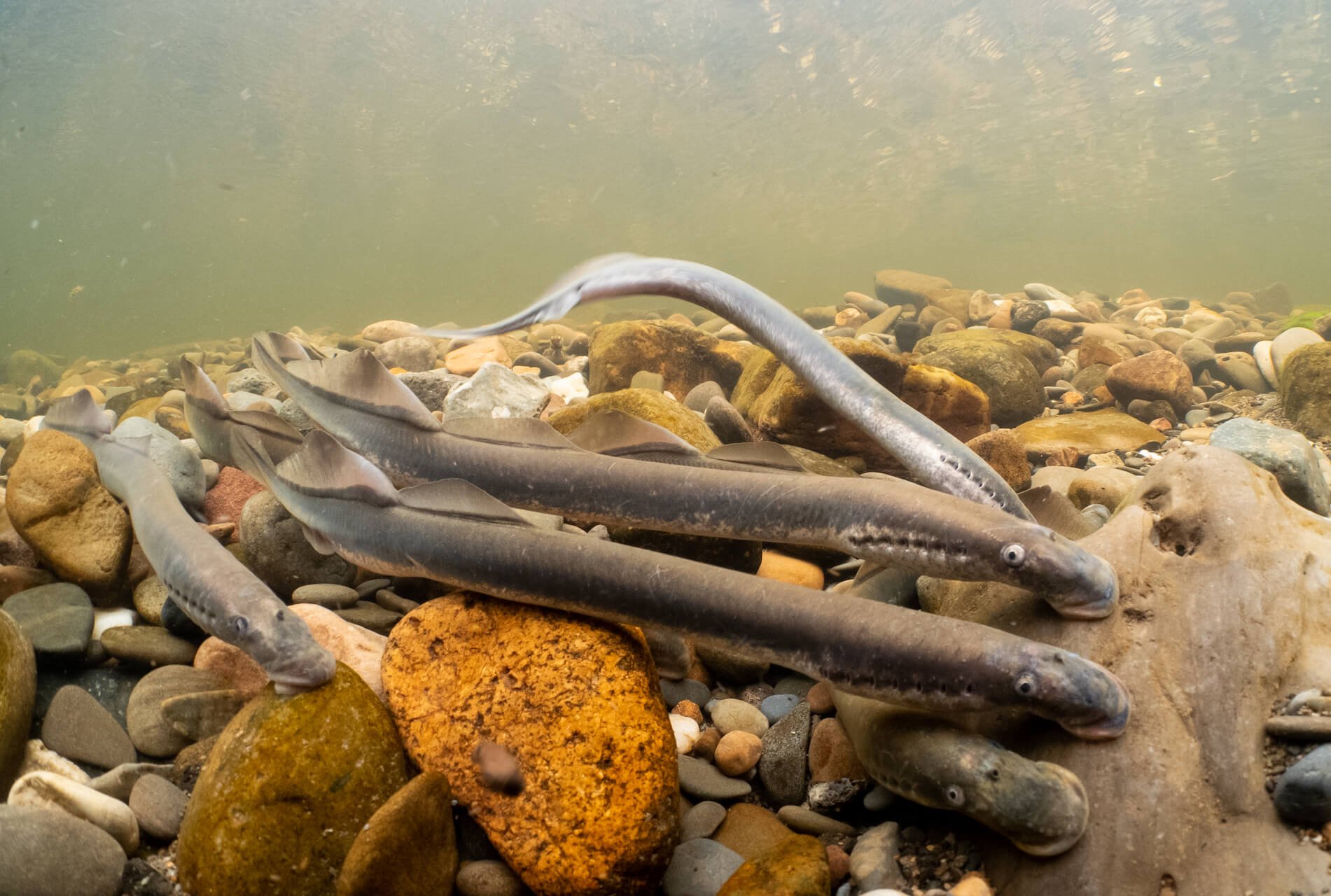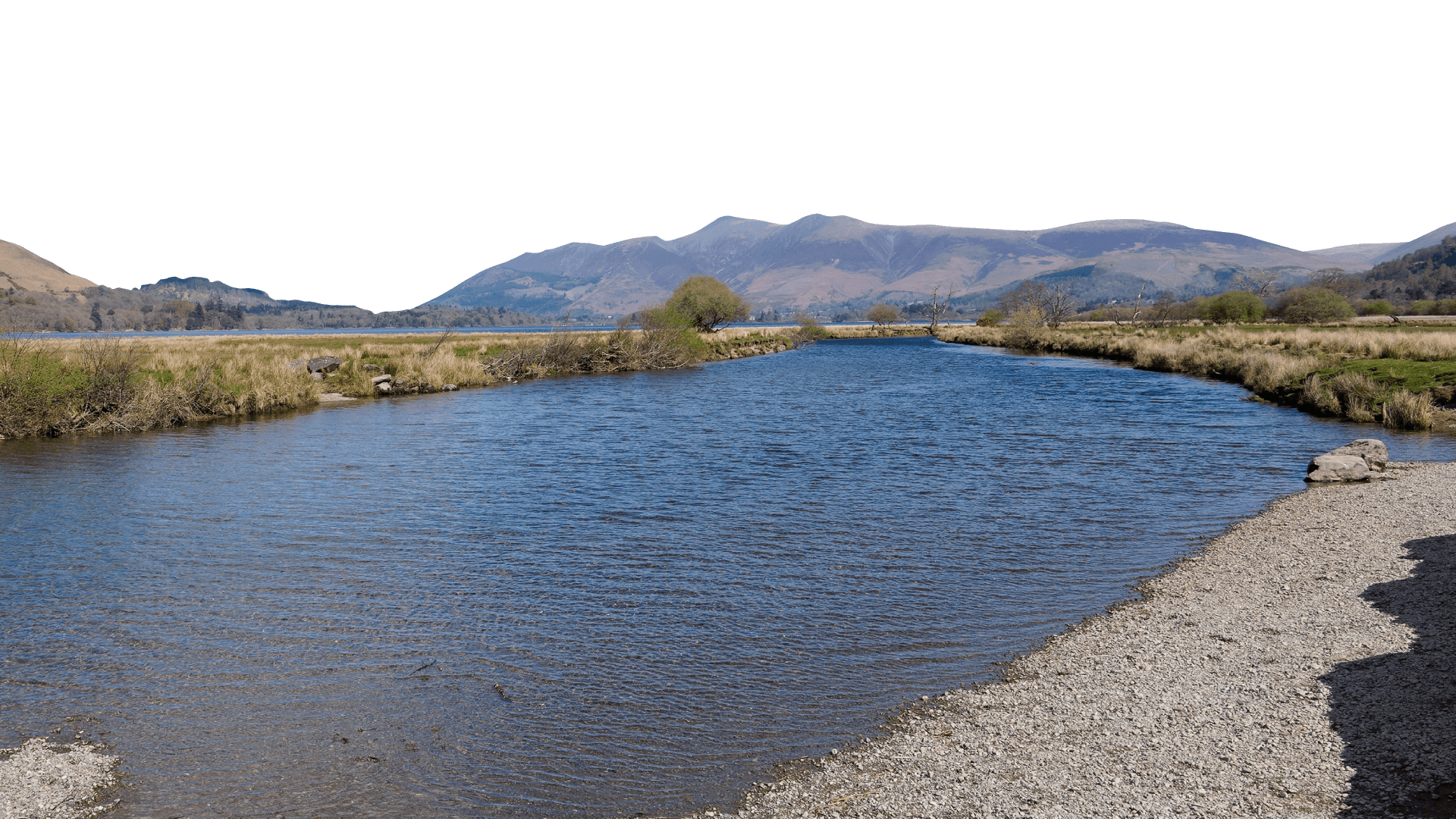
River Lamprey
River Lamprey (Lampetra fluviatilis) are one of the most primitive vertebrates still alive. In the UK there are three different types of lamprey; brook, river and sea. All lamprey are eel-like fish but with a round sucker-like disc surrounding the mouth, and lots of teeth inside. They use the sucker to attach to other fish, rasping away at their flesh with their teeth and feeding on bodily fluids, they also feed on carrion.
Brook Lamprey spend their entire life in freshwater and are the smallest of the British lamprey, reaching 15 to 19cm in length. Unlike other British lamprey species, they don’t feed as adults. River lamprey are larger than brook lamprey, reaching 30 to 50cm in length. They live in the sea and return to freshwater to spawn. When they find a suitable breeding place, the male will attach to the female using his sucker and wrap his body around hers, fertilising the eggs as she lays them. Brook and river lamprey spawn in a ‘ball’, which may comprise up to 50 individuals. This spawning frenzy for both Brook and River lamprey usually occurs between April and June.
Sea lamprey spawn in much smaller numbers and are the largest of the three species; individuals can grow to approximately 1m in length. After spending 18 to 24 months feeding at sea, adult sea lamprey migrate up rivers in the spring and early summer. They spawn from May to July in areas of pebble and cobble substrate. After spawning, the adults of all three species die. The eggs eventually hatch and the juveniles drift on the currents into suitable nursery habitat, usually areas with fine, soft substrate in well-oxygenated, slow-flowing water, where they spend several years buried in the silt.
River Lamprey © Jack Perks
Juvenile lamprey are known as ammocoetes, and feed on diatoms and other algae, and bacteria. When they finally mature, the river and sea lamprey migrate out to sea, whilst the brook stay in the river.
Did you know?
River lampreys are cartilaginous fishes (like sharks and rays), so have a skeleton of cartilage instead of bone.


